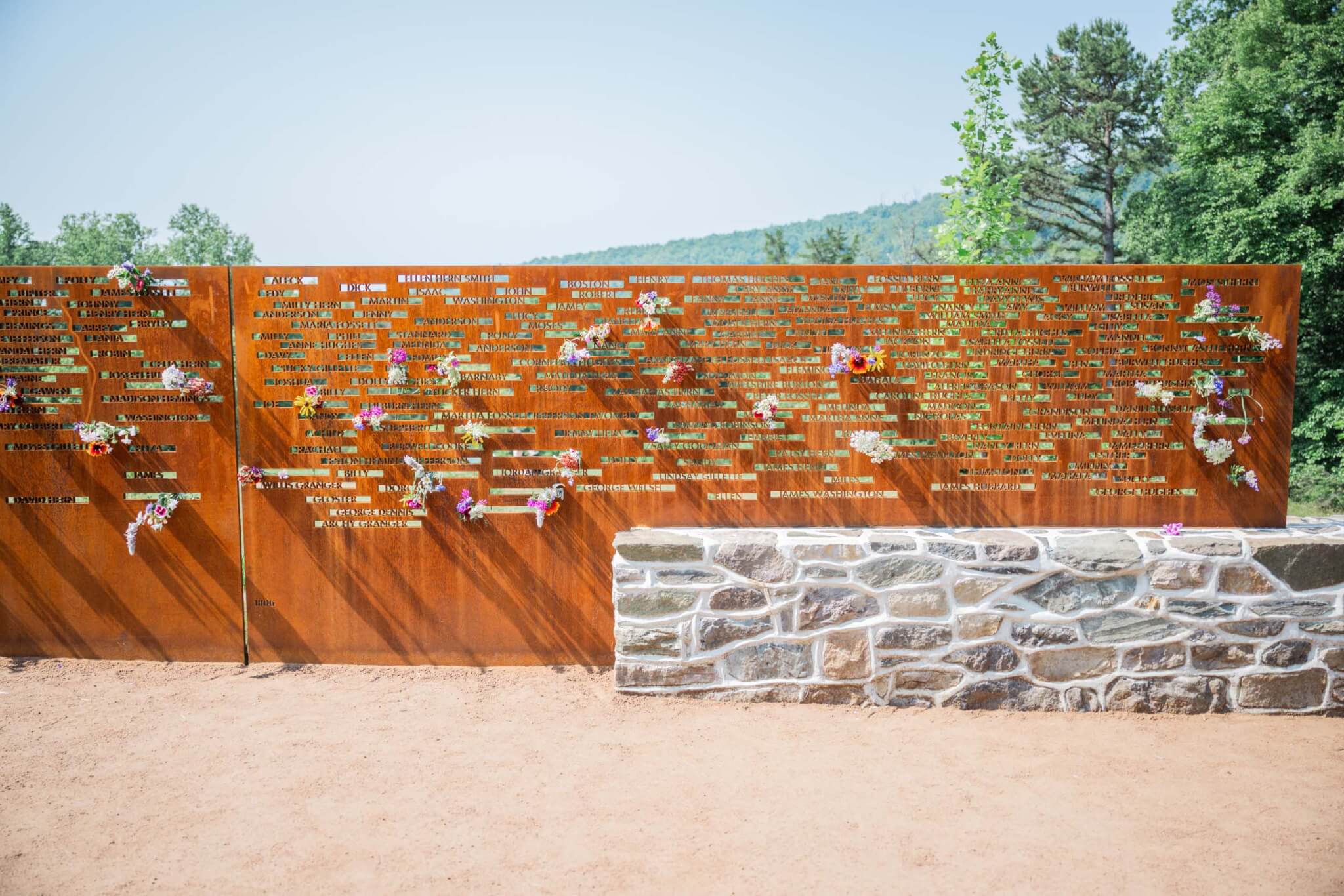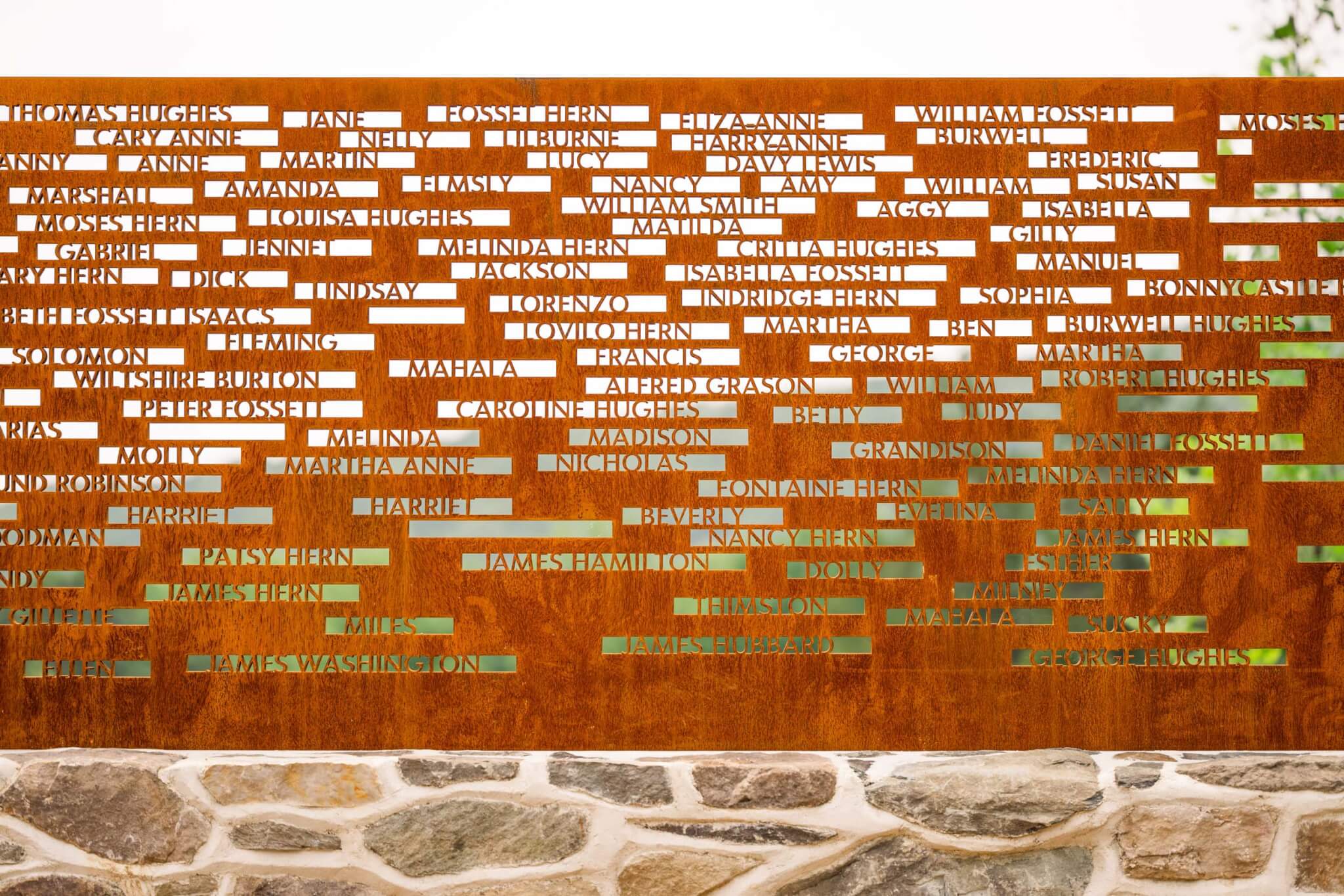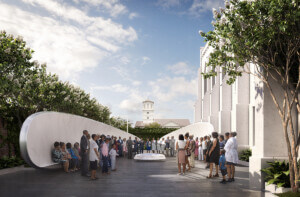The Nelson Byrd Woltz Landscape Architects– (NBW) and HGA–designed Contemplative Site at Monticello opened with a private Juneteenth ceremony on June 17. Located on Thomas Jefferson’s 5,000-acre Virginia plantation, which the President operated with slave labor from 1770 to 1826, the site remembers 607 enslaved people who worked at Monticello. Construction on the site began in January, and completed earlier this month.
The Contemplative Site is located on Mulberry Row, where enslaved people were housed and some production buildings were located, which faced the plantation’s mansion. Monticello estimates that up to 130 people would have been enslaved on the plantation at a given time. The physical memorial, which was designed in consultation with descendants of people enslaved at Monticello, centers around a 60-foot-long Corten steel wall.

The wall follows a “path of labor,” according to the design team, with the names of people enslaved at Monticello etched into it with a water jet. The names were arranged in order of date of birth, or date of first appearance in Jefferson’s records when date of birth was not known. This arrangement shows both the evolution of the enslaved community, and groups together the names of people who would have labored around the same time. Gaps in the steel allow for the Corten to be updated with additional names as historians continue to research slavery at Monticello.

HGA design principal Peter D. Cook said that “it’s a place where visitors will find respite, a quiet place for personal reflection on the sometimes-difficult stories told on the mountaintop.” Around the wall, the site connects to the literal path (of labor) the enslaved people walked when hauling water from the plantation’s spring to the mansion. Stone benches near the wall offer visitors a chance to rest, and as the site’s name offers, contemplate, under shade trees. The design team sought to address both the individual scale, with the names, and the massive scale of production through slave labor, with paths meaningfully large enough for the scale of the plantation itself.

NBW principal Thomas Woltz added “the Contemplative space is designed as a tribute to the people that labored on this site as it brings us into confrontation with one of the most brutal acts that humans can perform one another—the act of enslavement… We hope this space of reflection will allow for visitors and descendants and all the people that will encounter this site to consider the lives and the histories of those whose enslaved bodies created this bedrock of American history.”

The Contemplative Site was designed to symbolically connect with a previous design intervention on Monticello’s Burial Ground for Enslaved People, which was also designed by NBW and HGA. The burial ground, which was rededicated on Juneteenth 2022, holds the remains of 40 people who were enslaved at the plantation. The design team saw the Completive Site as completing the association of “the sites of labor and final rest.”











